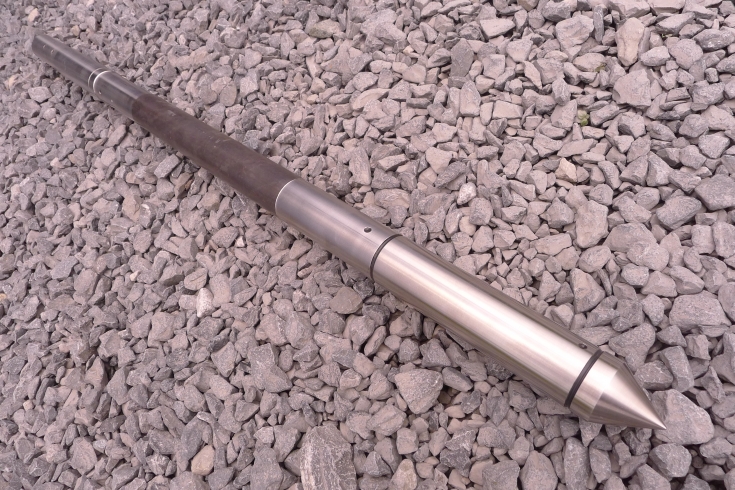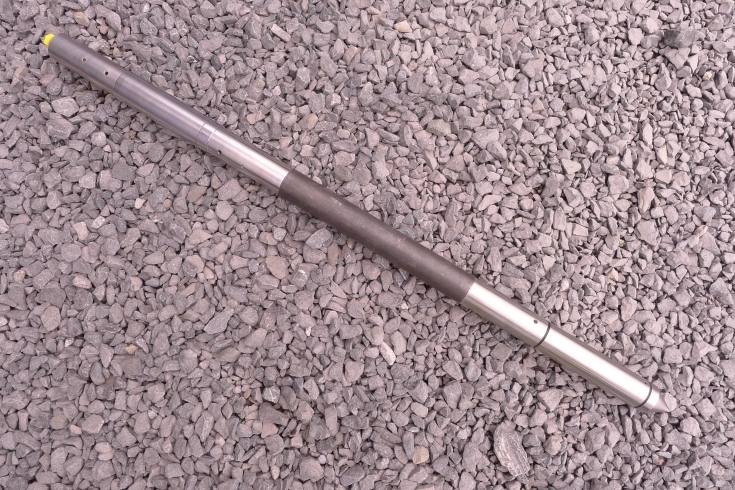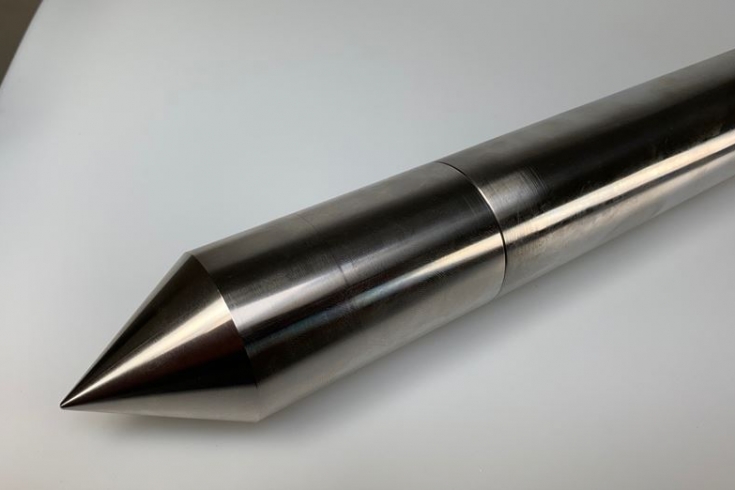Seismic cone penetration testing (SCPT or SCPTu) has proven to be a very accurate and reliable and therefore important geotechnical instrument and CPT system worldwide to determine low strain in-situ compression (P) and shear (S) wave velocity profiles. The P-wave and S-waves velocities are directly related to the soil elastic constants of Poisson’s ratio, shear modulus, bulk modulus and Young’s modulus. The accurate determination of P-wave and S-wave arrival times from the recorded time series is of utmost importance to calculate reliable seismic wave velocities.
Since the SCPTu seismic tests are carried out during a traditional CPT test (the seismic module is mounted on top of a traditional electric CPT (piezo-)cone), the parameters shear wave right, shear wave left and compression wave can be combined with the parameters obtained with traditional CPT testing, namely the cone resistance (qc), the local friction (fs), the deviation of the vertical (i) and the in-situ pore pressure (U).
Accurate in-situ P-wave and S-wave velocity profiles are of paramount importance in geotechnical foundation design. These parameters are used in both static and in dynamic soil analysis procedures where elastic constants are input variables into models defining the different states of deformations such as elastic, elasto-plastic, and failure (Finn, 1984).
Another important use of estimated S-wave velocities in geotechnical design is in liquefaction assessment of soils. Since the S-wave velocity is influenced by many variables that influence liquefaction (e.g., void ratio, soil density, confining stress, stress history, and geologic age), it is an excellent index of liquefaction.
The Gouda-Geo seismic CPT system is an easy to use, versatile and straightforward system, that can be used worldwide in combination with standard 10 cm² or 15 cm² electric cone penetration testing cones. The system comprises grosso modo of a triaxial seismic adapter, a signal distribution box and a seismograph.
The seismic CPT system mainly consists of standard components in the international industry (making it cost effective) of proven technique and reliability (it has e.g. a controllable source). The output data are directly usable by the engineer. There is absolutely no need at all for signal conditioning systems and alike. The user interface is straightforward which makes the seismic CPT system really simple to operate and popular on an international and worldwide scale. The results of seismic CPT testing can be coupled effectively to soil probes. Details of the seismic CPT system, the down hole test procedures, and comparisons with cross hole results have been described by Campanella et al (1986).
The seismic SCPTu module can be mounted on top of a 10 cm² electric CPT(U) cone and allows for highly accurate seismic testing whilst performing a standard CPT(u) test. The module houses 3 individual geophones in 3 different orientations, which makes the adapter suitable for measuring the seismic waves in the X, Y and Z axis, also called triaxial seismic testing. These highly accurate geophones have an unlimited shelf life and provide years of trouble-free service.
The seismic adapter’s geophones are self-generating velocity detectors especially designed for rugged environments. They withstand extreme shock with no change in performance characteristics. The geophone itself is sensitive to motion along its longitudinal axis and is designed to operate in any position from vertical to horizontal. With a natural frequency of 28 Hz, the geophone is an ideal motion sensor for frequencies in the acoustic spectrum.
The adapter is designed such that the geophones record the soil profile’s response to low strain seismic disturbances. Through its diameter of 44 mm, it also reduces the friction on the CPT sounding tubes.






